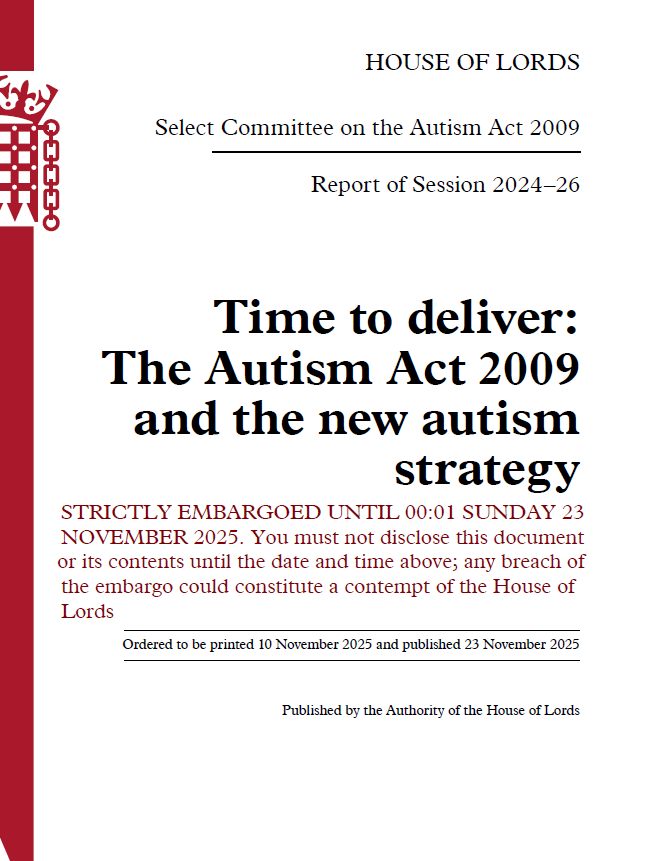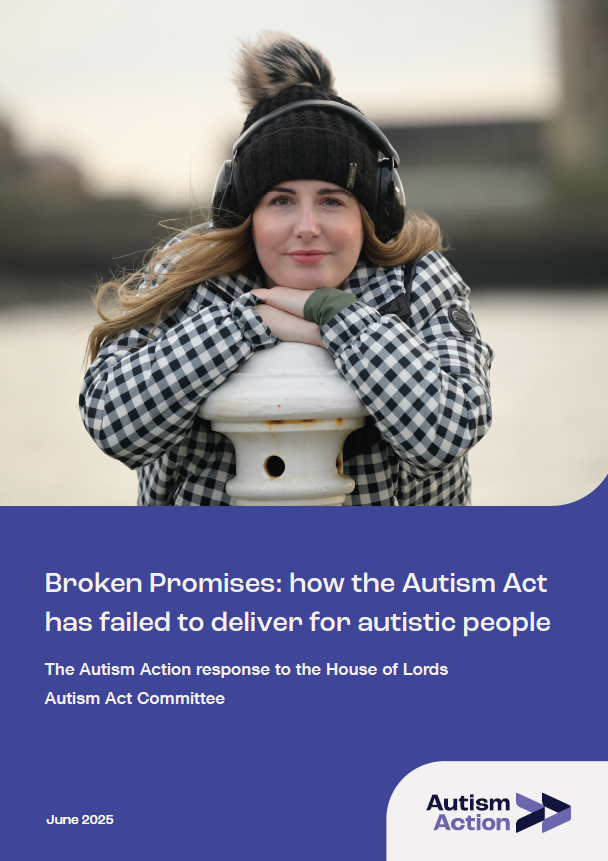Making the House of Lords report count
The Autism Act 2009 is a law that says the Government must make an autism strategy, keep it up to date, and provide guidance for the NHS and local authorities about what they need to do. A House of Lords committee was formed in 2025 to review the Autism Act and to make recommendations about how the Government should support autistic people. That makes both the Autism Act and the autism strategy what we call ‘root causes’ – because they have the potential to have an impact on all autistic people, and if the Autism Act and autism strategy aren’t working, they will create a huge number of problems across all areas of life.
This page explains the importance of the House of Lords Committee and how you can help make sure the Government listens to its recommendations.
Read the Committee's report
The committee did an excellent job of listening to autistic people and those who support them. Its report is extremely thorough, at 254 pages long. It lays out many views of autistic people and those who support them. It acknowledges some positive change since 2009 but it also clearly describes a long list of failings. It makes very strong recommendations to the Government.
The full version is available via the committee’s webpage, along with shorter versions. An easy-read version is expected to follow.
Key moments in 2025 and 2026
HOUSE OF LORDS REPORT
Publication of the Committee’s report: November 23rd 2025.
The report is called ‘Time to deliver’. It makes very strong recommendations to Government about the next autism strategy. Autism Action contributed to the committee’s work, including via a survey of over 5,000 community members, and we support the report’s recommendations.

→
GOVERNMENT RESPONSE
The Government must respond within two months, though a short extension to this deadline may be granted.
The way the Government responds to the committee’s report will help us understand the Government’s thoughts about a new autism strategy.
We want to see the Government accept the recommendations in the House of Lords Time to deliver report.
If the Government response is weak or disappointing, we should all be concerned about the autism strategy.
→
AUTISM STRATEGY - JULY 2026
A new or updated autism strategy is due in July 2026.
The autism strategy is how the Goverment describes ways it will help autistic people, for example by addressing problems in autism assessment, services and support. The strategy should come with funding.
If the new autism strategy is weak, for example with no funding, no progress updates, and no ways to hold services accountable for failures, then the situation for autistic people is likely to get worse, not better.

Here's what you can do
Whether you’re an individual or part of an autism organisation, there’s a lot you can do.
Make sure everyone you know is aware how important this is. Share this page and our social media posts with your friends.
Contact your MP and tell them why things need to be better and that you need them to push for a good Government response to the House of Lords report and a high quality autism strategy.
Make a noise! Talk about all of this online using the hashtag #autismstrategy2026. Tag key people like your MP in your posts.
Be ready to get involved as much as possible in the months leading up to a new autism strategy. The Government needs to know how many people are fighting for better services and support. Sign up to our mailing list for updates and ideas.
Autism Action's work for the House of Lords Committee
Throughout 2025, the House of Lords Committee held evidence sessions and ran a public consultation. Our CEO, Tom Purser, gave evidence in person. We also decided that the most impactful thing we could do would be to empower a large number of autistic people, and those who support them, to take part. Members of the public were already invited to write to the committee in as much detail as they wanted. We knew we could complement those submissions with thousands of opinions about key topics, gathered in a way that could be much more easily summarised, and which would better capture the scale of support. In just a few weeks, over 5,000 people completed our survey, which we developed with the support of members of our Community Advisory Panel.
There was a record public response to the committee’s call for evidence, with nearly 400 submissions direct to the committee. We added the views of more than ten times that number via our report, ‘Broken Promises: how the Autism Act has failed to deliver for autistic people’. We deliberately presented our report in a simple, visual format to make sure the important messages didn’t get lost among thousands of words.


